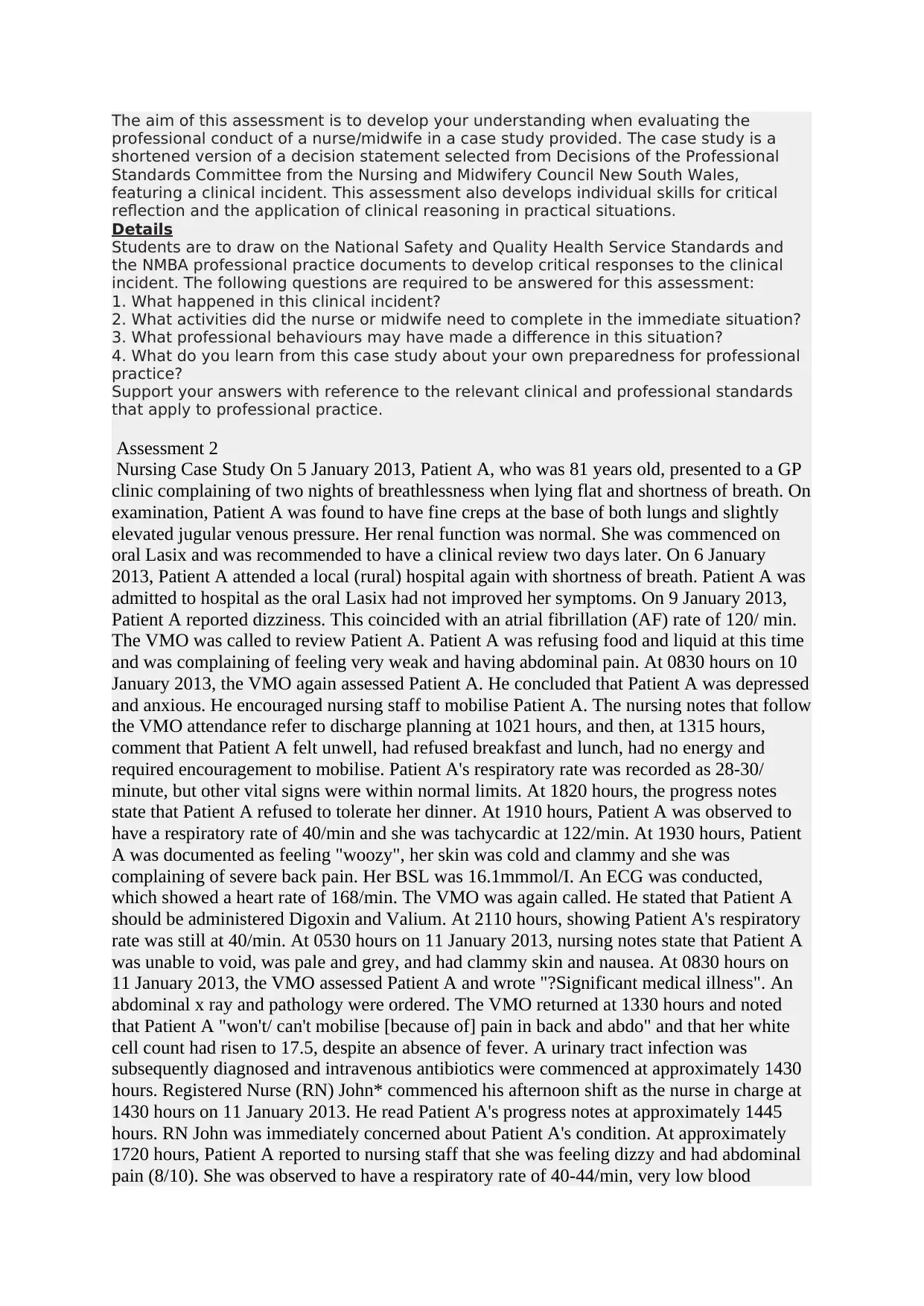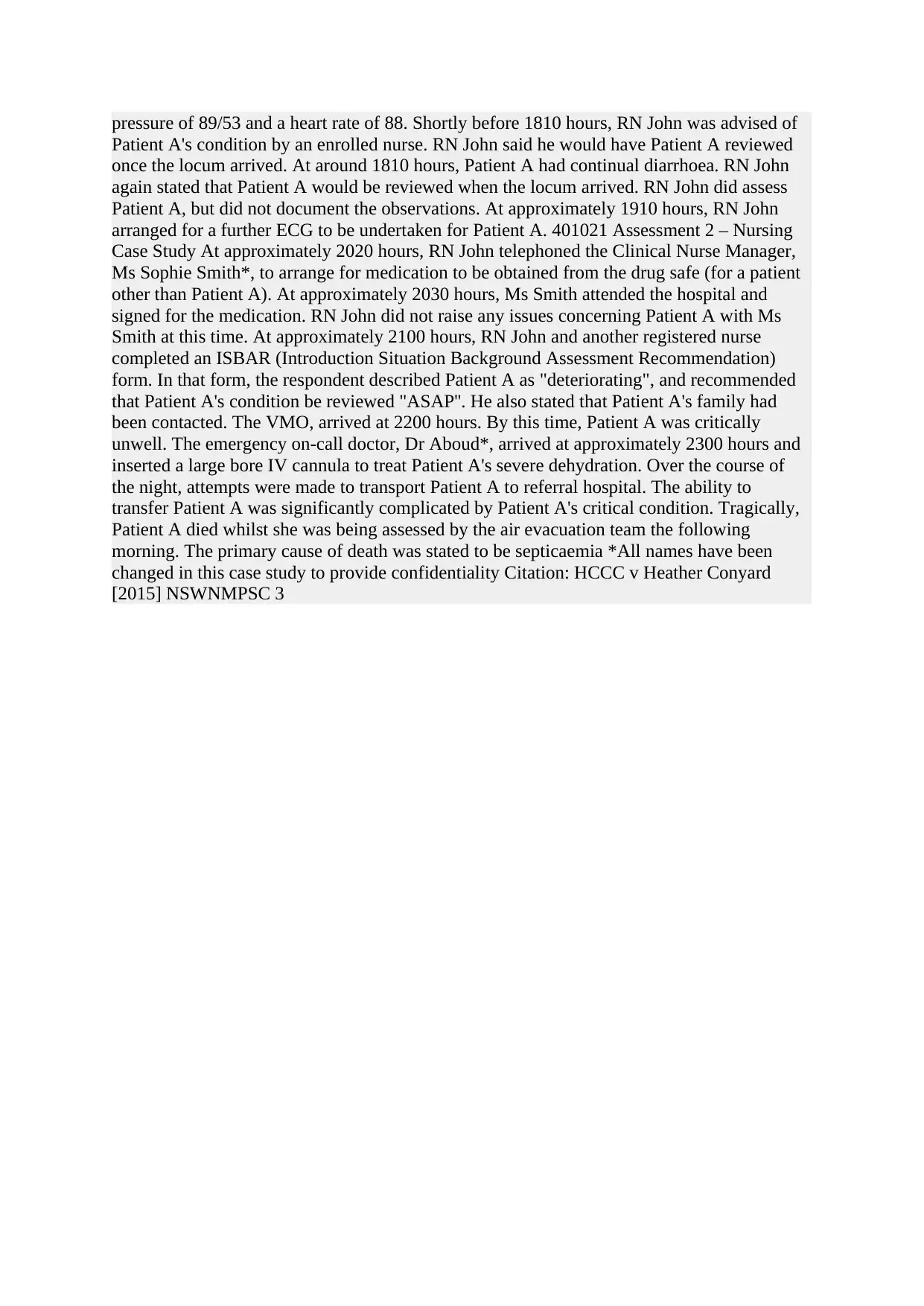Assessment 2: Nursing Case Study - Professional Conduct Review
VerifiedAdded on 2019/09/22
|2
|1169
|304
Case Study
AI Summary
This case study analyzes a clinical incident involving an 81-year-old patient admitted to a rural hospital with shortness of breath, ultimately leading to the patient's death from septicaemia. The assessment requires an evaluation of the professional conduct of the registered nurse (RN) John, focusing on his actions and decisions throughout the patient's deteriorating condition. The analysis involves addressing specific questions: the events of the incident, the required immediate actions, the impact of professional behaviors, and the lessons learned for personal professional preparedness. Students must support their responses by referencing the National Safety and Quality Health Service Standards and NMBA professional practice documents. The case highlights critical failures in patient assessment, timely intervention, and communication, emphasizing the importance of adherence to professional standards and the potential consequences of inadequate care. The student is required to critically reflect on the case, applying clinical reasoning to identify areas where the nurse's actions deviated from expected practice and how those deviations contributed to the patient's adverse outcome.
1 out of 2








![[object Object]](/_next/static/media/star-bottom.7253800d.svg)